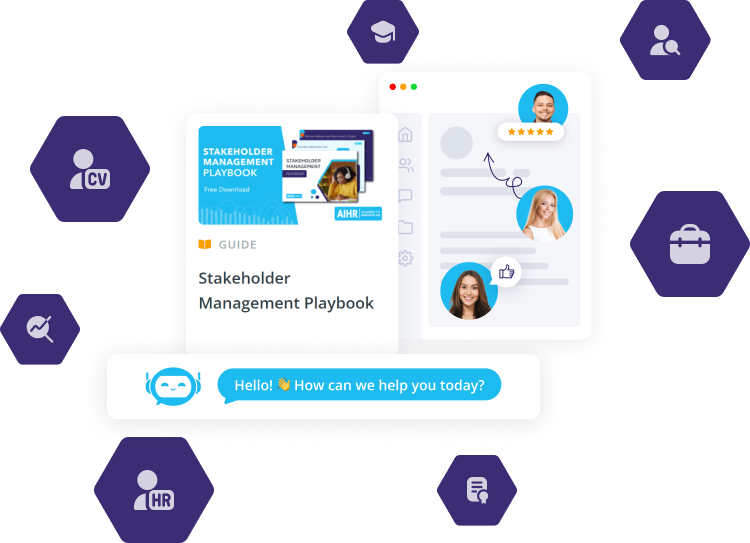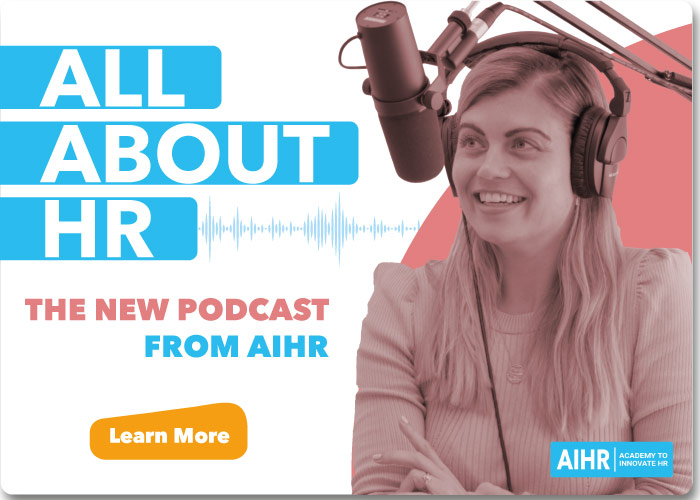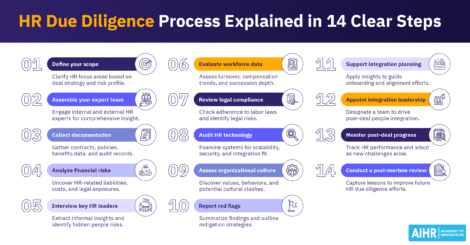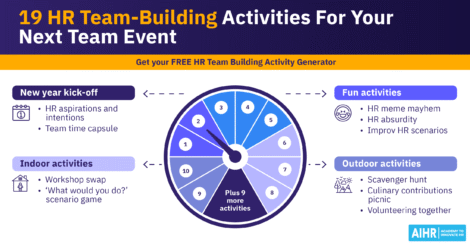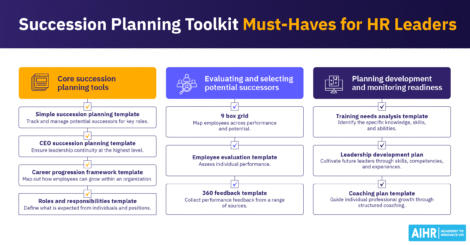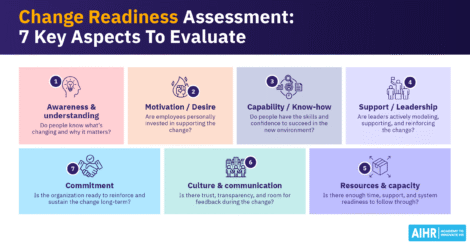How To Conduct a Change Readiness Assessment [+ Template]
According to Deloitte, 60% of executives plan to increase transformation spending, even in a recession, because change management is essential for maintaining competitiveness and talent retention. The big question is: Are those funds spent wisely, and are organizations ready for change?
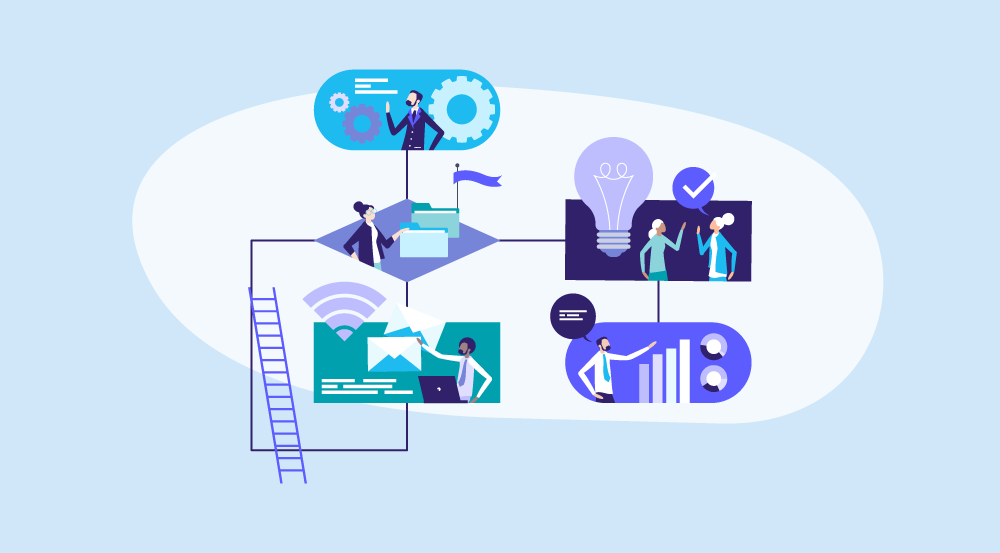
A change readiness assessment can determine whether your transformation effort will succeed or stall. With 96% of transformation programs facing barriers that threaten their success, it’s clear that good strategy isn’t enough.
HR leaders must understand where the organization stands before implementation begins. A change readiness assessment delivers this insight, revealing whether employees understand the change, have the skills to adapt, and trust the process. It also reveals warning signs like hidden resistance, unclear communication, leadership misalignment, limited capacity, or gaps in time, tools, and other resources that could undermine progress.
When used at the right time – between planning and rollout – a change readiness assessment gives you the clarity to act decisively, prioritize support, and lead change that actually sticks. In this article, we break down how a change readiness assessment works, what it reveals, and how to use it to drive real, actionable change.
Contents
What is a change readiness assessment?
Key aspects of a change readiness assessment
When is it best to conduct a change readiness assessment?
Benefits of a change readiness assessment
7 steps to conduct a change readiness assessment
Examples of change readiness assessment questions
Change readiness assessment template
What is a change readiness assessment?
A change readiness assessment is a practical tool HR leaders use to evaluate how prepared their organization, teams, and individuals are to adopt and sustain a proposed change. Whether you’re rolling out new technology, restructuring a business unit, or transforming workplace culture, success doesn’t hinge on the plan alone – it depends on whether your people are ready to act on it.
Unlike a change impact assessment, which maps out what will change and who it will affect, a readiness assessment evaluates capability, mindset, and alignment, helping HR leaders to identify resistance points, skills gaps, communication blind spots, and cultural hurdles before they derail the initiative. Your aim shouldn’t be to predict every challenge but to know where you stand so you can tailor your support, training, and engagement strategies accordingly.
Research consistently shows that organizations with strong, ongoing change management practices are far more likely to achieve successful and lasting results. Change readiness is not a one-time checkpoint, but an ongoing process that must be embedded throughout the change journey, which is where HR leaders like yourself come in.
Key aspects of a change readiness assessment
A change readiness assessment focuses on seven key aspects that determine whether your organization is truly prepared to move from planning to action. These aspects align closely with established models like Prosci’s ADKAR (Awareness, Desire, Knowledge, Ability, Reinforcement) and Kotter’s 8-Step Change Model, which both highlight the human and organizational elements that make or break change initiatives.
1. Awareness and understanding
Do people know what’s changing and why? This is the foundation of any successful change effort. In both the ADKAR model and Kotter’s early steps (creating urgency, building a guiding coalition), awareness is essential to drive buy-in.
A readiness assessment gauges whether employees understand the change’s purpose, scope, and urgency, or whether confusion, misinformation, or silence are creating resistance.
HR pro tip: Make change communications clear and consistent, and use multiple channels (emails, FAQs, town halls) to ensure everyone understands the reasons and benefits of the change. You can also gather employee feedback to check for understanding and address confusion early.
2. Motivation / Desire
Even if people know what’s changing, do they want it? The assessment explores employee attitudes and appetite for change, asking whether people believe the change is necessary and whether they trust that it will lead to positive outcomes. This maps directly to the ‘Desire’ component in ADKAR and is critical to sustaining momentum beyond launch.
HR pro tip: Link the change to company values and vision by clearly showing how the change supports the organization’s goals to increase buy-in and reduce resistance.
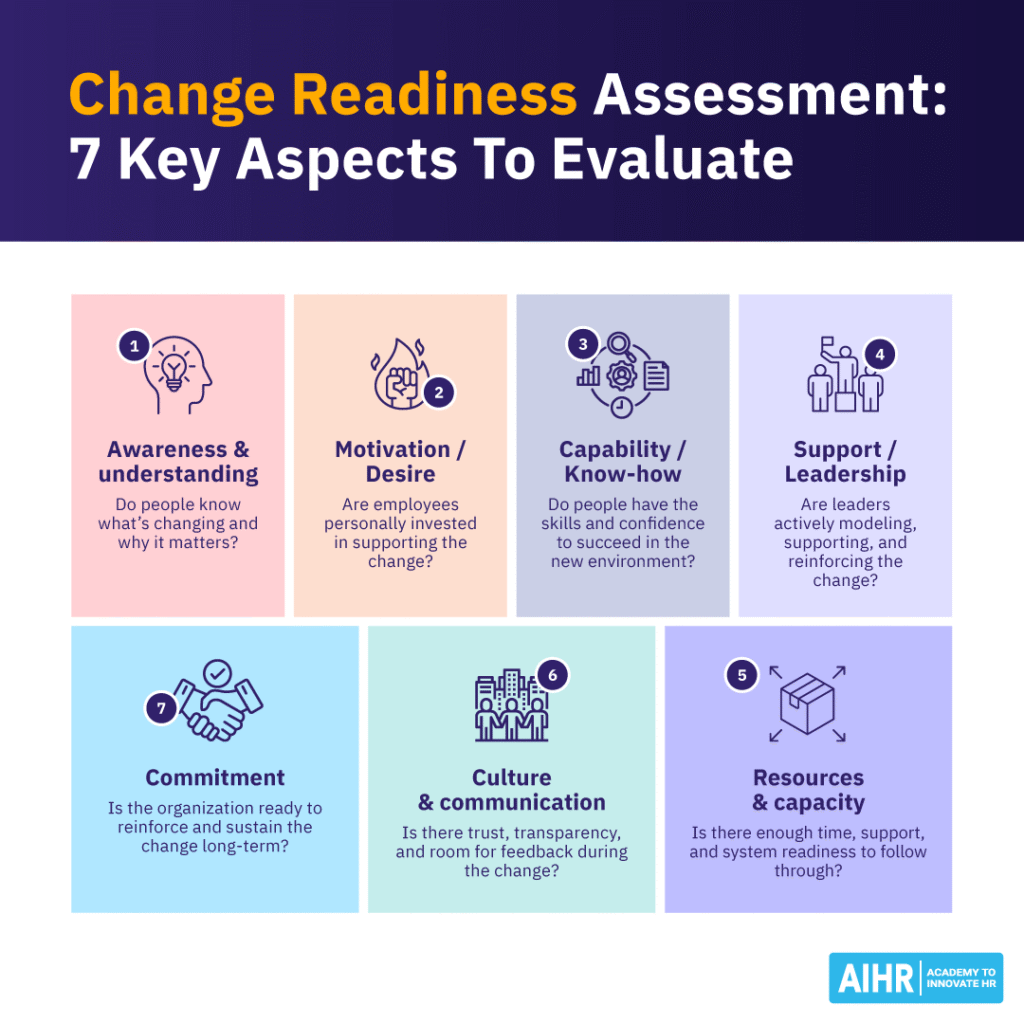
3. Capability / Know-how
Do employees and leaders have the skills, behaviours, and knowledge to operate in the new environment? This echoes the ‘Knowledge’ and ‘Ability’ stages in ADKAR and also touches on Kotter’s call to empower broad-based action.
A readiness assessment identifies gaps in training, confidence, and role clarity so that you can address them before they become implementation failures.
HR pro tip: Invest in targeted, practical training and offer workshops, e-learning, and mentoring to build confidence and adaptability. From there, you can assess existing skills and plan for upskilling where gaps exist.
4. Support / Leadership
Is leadership aligned, visible, and actively championing the change? People look to leaders for cues, and if managers are disengaged or inconsistent, the rest of the organization will hesitate
Readiness assessments evaluate whether leaders are communicating a unified message, demonstrating commitment, and removing obstacles, reinforcing Kotter’s emphasis on guiding coalitions and enabling action.
HR pro tip: According to Gartner, 82% of HR leaders believe managers are not fully equipped to lead change, and 77% report employee fatigue. It’s therefore critical to prioritize manager training and empower them to detect and address resistance early.
5. Resources and capacity
Do we have the time, tools, and bandwidth to make the change happen? This practical layer is often overlooked until change initiatives stall under the weight of everyday demands. Readiness assessments examine whether teams are stretched too thin, whether systems support the shift, and whether dedicated resources have been made available.
HR pro tip: Conduct a stakeholder analysis to ensure all affected groups are identified and have the tools, time, and support needed to succeed, and use it to guide engagement and resource allocation.
6. Culture and communication
Is there trust in the organization? Is communication two-way, clear, and credible? Change readiness is deeply influenced by culture: if people feel safe to raise concerns, ask questions, and offer feedback, they’re more likely to engage. This aspect of the assessment looks at organizational openness, past change legacies, and how effectively messages are being received and understood.
HR pro tip: Co-create change strategies with employees by building psychological safety and inviting employees to participate in shaping change, which helps prevent fatigue and increases engagement.
7. Commitment
Will the change stick? Finally, readiness assessments explore whether the organization is set up to reinforce and sustain the change. This includes looking at incentive structures, accountability, performance metrics, and reinforcement plans, which are all closely tied to the final step in ADKAR, “Reinforcement,” and Kotter’s final steps around embedding change in culture.
HR pro tip: These seven aspects don’t just measure current readiness; they guide what to focus on next. If the data shows people are motivated but underprepared, the strategy shifts to training. If leadership is aligned but communication is lacking, it becomes a messaging issue. Treat change readiness assessments as a focused, evidence-based path to support successful change.
Build an HR team that’s ready for what’s next
Organizational change is constant, and your HR team must be equipped to navigate it. From restructuring and upskilling to culture shifts, enable HR to lead from the front.
With AIHR for Business, you can:
✅ Develop your team’s capability in change management, communication, and stakeholder alignment
✅ Build strategic alignment between HR and business objectives
✅ Support continuous development with flexible, expert-led learning
🎯 Make HR the engine of change, not just a passenger.
When is it best to conduct a change readiness assessment?
The best time to conduct a change readiness assessment is before you launch your change initiative, not after you’ve already started rolling it out. This is the moment when HR has the greatest opportunity to shape outcomes, influence leadership alignment, and proactively support employees before resistance sets in, confusion spreads, or momentum stalls.
Too often, organizations move from planning straight into execution under pressure to act quickly, but skipping the readiness step is like building on uncertain ground. A change readiness assessment gives HR a powerful diagnostic tool between strategy and rollout, when the direction is clear, but before people, processes, and systems are in motion. That’s when you need to know:
- Do employees understand what’s coming and why it matters?
- Are leaders ready to model and reinforce the change?
- Do teams have the skills, resources, and capacity to execute?
- Are there warning signs (fatigue, mistrust, misalignment) that could compromise success?
The earlier HR can uncover barriers or blind spots, the more targeted and effective the response can be. Think of the change readiness assessment as your early warning system: it doesn’t delay progress, but it gives you the insight to tailor training, communication, leadership support, and resource allocation with precision.
Benefits of a change readiness assessment
Organizations that regularly conduct readiness assessments and adapt their change strategies accordingly tend to experience lower levels of change fatigue, higher employee engagement, and improved project outcomes over time.
Let’s take a look at the additional benefits of conducting change readiness assessments.
- Improved chances of a smooth rollout: Readiness assessments surface resistance points, skill gaps, and engagement risks early, letting you take action before issues escalate. This proactive insight increases the likelihood that the change will land well, have longevity, and achieve its intended outcomes.
- Stronger employee involvement: When employees feel informed, heard, and supported from the outset, they’re more likely to take ownership of the change. Readiness assessments give people a voice and signal that their experience matters, which builds trust and commitment.
- Lower risk of delays or derailments: Many change initiatives fail not because of the strategy but due to poor execution. A readiness assessment reduces the risk of costly rework, delays, or stalled momentum by ensuring key conditions for success are in place before rollout.
- Clearer communication and teamwork: Readiness assessments often reveal misalignments in messaging or siloed teams, and acting on these insights supports better collaboration, improves internal communication flows, and helps avoid confusion during implementation.
- Better resource allocation: By identifying where support is truly needed, whether it’s training, leadership alignment, or extra capacity, you can allocate budget, time, and personnel more effectively to avoid overspending in some areas while neglecting critical ones in others.
- Evidence-based decisions: Instead of relying on assumptions or anecdotal feedback, HR and project leads get data-driven insights to inform their change strategy, which leads to better decision-making and strengthens the business case for people-related investments.
- Enhanced employee wellbeing and morale: By identifying anxiety, confusion, or burnout risks upfront, you can put the right support structures in place to protect employee wellbeing during periods of uncertainty and reduce turnover during critical transition phases.
- Stronger compliance and governance: Especially in highly regulated environments, readiness assessments help ensure that changes are rolled out in a controlled, compliant manner with proper documentation, oversight, and risk mitigation embedded into the process.
7 steps to conduct a change readiness assessment
Having a clear, structured approach to your change readiness assessment keeps you focused on the right questions and avoids missed blind spots. It turns the process from a box-ticking exercise into a practical tool you can actually use to shape your strategy and support people through the change.
1. Clarify the purpose and scope
Start by defining what the change is, and what it isn’t. Are you rolling out a new HR system, merging departments, shifting organizational values, or launching a new operating model? The scope defines the boundaries of your assessment and helps avoid wasted effort or vague results.
→ Try this: Draft a one-page change summary that clearly outlines what is changing, why it matters, who it affects, and what success looks like, and use this document to align your HR, project, and leadership teams before moving forward.
2. Map out key stakeholders
Identify everyone who is directly and indirectly affected, including senior leaders, managers, frontline employees, union representatives, project sponsors, and even external partners if applicable.
→ Try this: Conduct a stakeholder analysis that lists all groups affected by the change (including informal influencers) and classify them by level of impact – the degree to which the stakeholder group (employees, in this case) will be affected by the change.
3. Gather data for the assessment
Use a mix of qualitative and quantitative methods to get a well-rounded picture. Consider:
- Surveys to measure awareness, attitudes, and confidence levels at scale.
- Interviews or focus groups to explore underlying concerns or organizational history.
- Observation or process reviews to assess how work is currently done and where the gaps might lie.
→ Try this: Design a short readiness survey or interview guide aligned with key change factors. Frame your questions around the core dimensions of readiness: awareness, motivation, capability, leadership support, culture, communication, resources, and commitment.
4. Analyze the results
Sift through your findings to identify patterns: Where are the readiness gaps? Are there groups that feel left out or leaders who are unprepared? Is there a mismatch between executive confidence and employee understanding? Look for both risks and strengths, particularly areas where the organization is already well-positioned to support the change.
→ Try this: Identify the top three readiness gaps and top three strengths using a simple heatmap or RAG (Red-Amber-Green) rating system. Look for patterns across teams, roles, or locations that may indicate systemic challenges or enablers.
5. Prioritize issues and opportunities
Not everything needs fixing at once. Categorize your findings into:
- Immediate blockers that must be handled before rollout.
- Planned actions that should be built into the overall change plan.
- Quick wins that can boost momentum early on.
- Long-term opportunities that help strengthen future readiness.
Rank them based on risk, scale of impact, and ease of resolution.
→ Try this: Plot your findings in a 2×2 grid (impact vs. urgency) to decide what to tackle first. Flag anything marked “high impact + urgent” as a priority action in your change strategy.
6. Develop a change management plan
Based on your assessment, build or adjust your change management plan to address the specific gaps you’ve identified. This might include targeted training, leadership alignment sessions, communication strategies, or adjustments to workload and timelines.
→ Try this: Update your change plan (or create one) by directly tying interventions, like training, communications, or leadership alignment, to the readiness gaps identified, and make sure each action has a responsible owner and timeframe.
7. Communicate findings and next steps
Be transparent and share the results of the readiness assessment with key stakeholders, explaining how their input is being used to shape the change effort. It’s important to clarify what will happen next, who owns each step, and how progress will be monitored.
→ Try this: Prepare a short slide or briefing pack that summarizes the assessment results and outlines the next steps and use it to engage leaders and keep stakeholders informed and aligned.
Examples of change readiness assessment questions
As we’ve unpacked, there are seven key aspects of a change readiness assessment. Here are sample questions you can use in your surveys using a Likert scale (e.g., 1 = strongly disagree, 5 = strongly agree) to gather quantifiable data.
Aspect of change readiness Sample assessment questions Awareness and understanding – Do people know and get it? – I understand the reason behind the upcoming change.
– I am clear about how this change will impact my role.
– Communication about the change has been timely and easy to understand.Motivation / Desire – Do people want it? – I believe this change will have a positive impact on the organization.
– I feel personally motivated to support this change.
– I understand how this change aligns with our broader goals and priorities.Capability / Know-how – Can people do it? – I have the skills and knowledge needed to operate effectively after the change.
– I feel confident in my ability to adapt to the new way of working.
– I know where to go if I need help or training to support the change.Support / Leadership – Is leadership aligned and visible? – My direct manager is actively supporting this change.
– I have seen senior leaders demonstrate commitment to this change.
– I trust our leadership team to manage this change effectively.Resources and capacity – Do we have what we need? – I have enough time and capacity to manage this change alongside my current responsibilities.
– Our team has the tools and resources we need to implement the change.
– The change initiative has been appropriately resourced to succeed.Culture and communication – Do we have trust and good dialogue? – I feel comfortable asking questions or raising concerns about the change.
– Feedback from employees is being listened to and considered.
– There is a culture of openness and honesty in how this change is being handled.Commitment – Will the change stick? – I believe this change will be sustained beyond the initial implementation phase.
– There are clear accountability measures to ensure long-term success.
– I expect our team will adopt and maintain the new way of working over time.
Change readiness assessment template
This change readiness assessment template is designed to help HR leaders and change managers quickly evaluate how prepared your organization is to implement a planned change. It gives you a structured, evidence-based way to assess key readiness factors across all levels of the business.
The template contains:
- Change readiness assessment summary template to compile your ratings, observations, priorities, and recommended actions across all readiness areas and use as your reference point for planning and stakeholder updates.
- Stakeholder analysis template to identify who is impacted by the change and assess the level of influence and support of each stakeholder group.
- Change readiness questionnaire to use as the basis to design surveys, interviews, or focus group questions that explore key readiness factors like awareness, motivation, leadership support, and capability.
- Prioritization matrix template to organize the insights from your readiness assessment into categories like immediate blockers, planned actions, quick wins, and long-term opportunities.
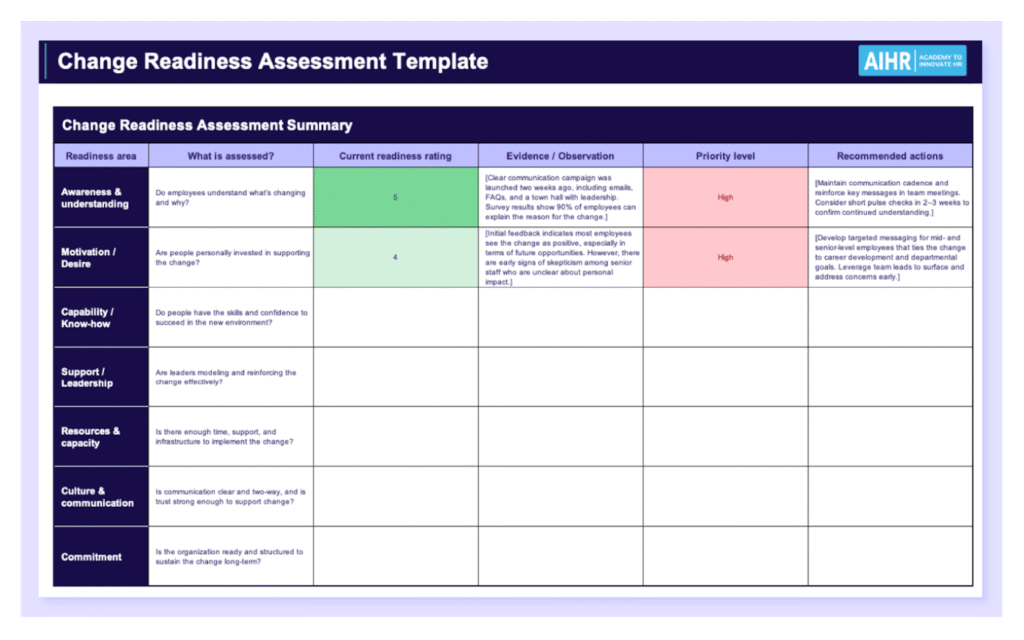
Tips for using this template
Treating the readiness assessment as a living tool and repeating it before each major milestone and adjusting your plan as needed ensures your change management approach remains proactive and responsive to real-world conditions. It’s also an essential way to embed change in your organization.
Here’s how top HR teams make the most of change readiness assessments:
- Tailor questions to your specific change initiative: Adjust language and focus areas to reflect the nature, scope, and context of your change. A system implementation will require different readiness indicators than a cultural transformation or structural reorganization.
- Gather input from across the organization: Include a diverse mix of roles, departments, seniority levels, and geographies. Readiness varies widely across teams, so it’s important to capture perspectives from those leading the change and those impacted by it.
- Base scores on actual data, not assumptions: Use survey results, interviews, focus groups, and other evidence sources to inform your ratings. Remember, the goal is to make informed decisions, not to guess or base the assessment on leadership opinions alone.
- Use the template to guide action: Don’t treat it as a static checklist aimed at reflection. Revisit and update it regularly to inform decisions, adjust tactics, and stay aligned as the change unfolds.
- Follow up on gaps with specific action plans: Where the assessment shows low readiness (e.g., low awareness or leadership misalignment), plan targeted interventions like leadership briefings, training, or improved communication.
- Share findings and next steps transparently: Use the completed template to guide informing stakeholders and build alignment by communicating what was assessed, what was learned, and what’s next to increase trust and reinforce engagement.
- Look for patterns, not just scores: A single low rating might not signal trouble, but consistent patterns across teams or departments often reveal systemic risks that need to be addressed before rollout.
- Repeat the assessment before each major phase: Conduct another readiness check before key milestones (e.g., go-live, behavioral rollout, policy enforcement) to ensure momentum and preparedness at every stage.
- Link findings to your broader change plan: Don’t let the readiness assessment sit in a silo. Use the insights to shape your change management plan, training roadmap, communication strategy, and leadership engagement efforts.
- Document lessons learned for future change: Readiness assessments offer valuable insight into how your organization responds to change, so capture lessons learned to improve future readiness, even after this initiative ends.
Over to you
You now have a clear, practical roadmap for conducting a change readiness assessment that goes beyond gut feel and gives you real visibility into how prepared your people, systems, and leaders are to embed a transformation. By using this process, HR leaders can identify resistance before it spreads, address capability gaps before they affect performance, and ensure leadership is genuinely aligned and equipped to lead from the front.
Your next step is to take the template provided, adapt it to your context, and make it a living tool in your change planning process. Start small if you need to — pilot it with a single business unit, or use it to test readiness for an upcoming initiative. Share your findings with stakeholders, build your change management plan around real data, and keep tracking readiness as you go. The most successful transformations aren’t just well-planned; they’re responsive, people-centred, and led by HR professionals who know how to turn insight into impact.
Learn more
Related articles
Are you ready for the future of HR?
Learn modern and relevant HR skills, online
